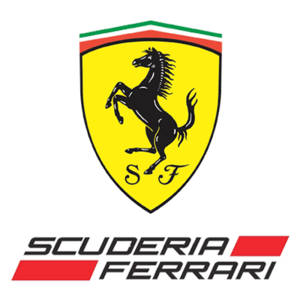Carlos Sainz crossed pit entry line but got no penalty in Las Vegas: here's why

Today at 04:31 AM
After the Las Vegas Grand Prix, where Carlos Sainz secured an impressive third place with an overtake on Max Verstappen in the final laps, one of the questions raised was why the Spaniard was not penalized for crossing the pit entry line when he was about to make his second stop, especially as similar cases in the past have been sanctioned.
During lap 27, after letting his teammate Charles Leclerc pass at the braking zone of Turn 14, Carlos Sainz was called into the pits by the team over the radio, pleasing the Spaniard, who had already been requesting a stop for several laps. However, just as he entered the pit entry — the line separating the pit lane access from the track — he received a counter-order to stay out, as the mechanics were not ready for the pit stop.
At that point, following the instructions given to him via radio, Carlos Sainz crossed the white line marking the pit entry and returned directly to the track in a "classic" race situation. This maneuver was immediately reported by Lewis Hamilton, who was behind Carlos Sainz at the time, to his race engineer for a potential report to the FIA.
In reality, this maneuver was not even investigated by the stewards, and no penalty was assigned to the Ferrari driver. Let's understand why the Spaniard's maneuver is legal, as it offers a great opportunity to grasp how the regulations work, sometimes defining very specific scenarios.
What the regulations say and how the FIA intervenes
The FIA rules on pit entry are governed by the International Sporting Code, specifically Appendix L, Article 4 of Chapter 4, which is further divided into four sections. The relevant section here is section d), which states that "except in cases of force majeure, or as otherwise specified by the race director […], any part of a car's tire entering the pit lane must not cross, in any direction, the line painted on the track to separate cars entering the pit lane from those on track."
To clarify, the FIA expressly prohibits crossing the pit entry line only if the car actually enters the pits, as happened last year with Fernando Alonso during the Singapore Grand Prix, for which he was penalized five seconds. Conversely, the International Sporting Code, which provides general guidelines, does not explicitly prohibit crossing the white pit entry line if the driver decides not to stop in the pits and returns to the track.
This distinction is crucial, as some circuits, such as the Red Bull Ring in Austria, require drivers to cross the white pit entry line to negotiate the penultimate corner. To address these specific scenarios, the FIA may supplement the International Sporting Code with event-specific notes, which apply only to that particular race and not to the entire calendar. This occurred, for instance, in Azerbaijan, where the race director specified that for safety reasons, any driver entering the pit entry lane was required to stop in the pit lane and could not return to the track.
Why Carlos Sainz was not penalized
However, the Las Vegas pit entry was designed not to pose a safety risk, as it begins well before the final corner, forcing drivers intending to stop in the pits to move off the ideal racing line. Since no additional notes were issued for the weekend, the only applicable rule was the one in the International Sporting Code, stating that "any part of a car's tire entering the pit lane must not cross, in any direction, the line painted on the track to separate cars entering the pit lane from those on track."
In Carlos Sainz's specific case, although he clearly crossed the white line separating the pit entry from the track, he did not violate the International Sporting Code because he never entered the pit lane to make a tire change. Consequently, he never technically entered the pit lane, which begins where the 80 km/h speed limit is imposed.
If Carlos Sainz had crossed the white line and then proceeded into the pit lane, a penalty would have been applied, as happened to Alexander Albon and Lewis Hamilton earlier this year during the Austrian Grand Prix.
In Carlos Sainz's case at Las Vegas, the race direction merely assigned a track limit violation, as he technically exceeded the boundaries delineating the track. This correctly did not result in a penalty but only in the cancellation of the lap time achieved during the infringing lap and the following one, as stipulated by the regulations.
The post Carlos Sainz crossed pit entry line but got no penalty in Las Vegas: here's why appeared first on Scuderia Fans.


